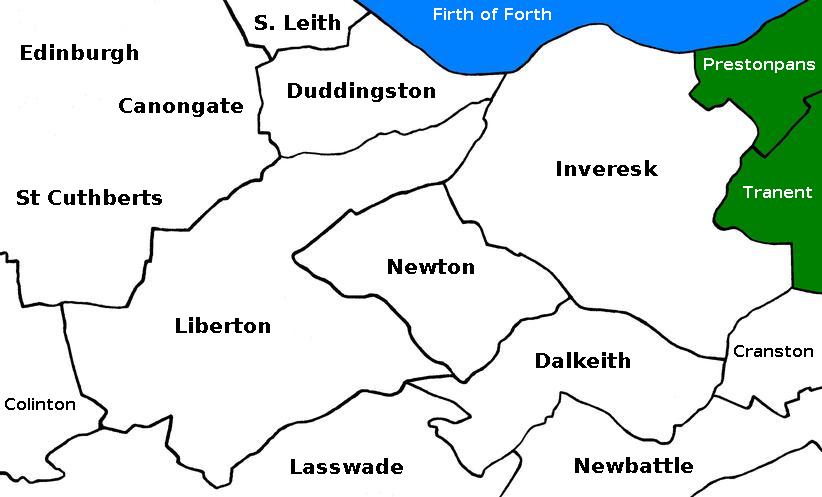Edward Neilson
Written by Ray L. Nelson
Pictures added by Lois C. Berrett
Edward
Neilson was born the 4th of August 1793 in the parish of Liberton, Midlothian,
Scotland, the son of Hamilton Neilson and Jean McGill. The family resided at Huntershall.
 |
| A view of Duddingston Village from across the loch |
The
Neilson family had resided in Duddingston parish, probably in the little
village of Easter Duddingston for many generations. They were colliers (the ancient term is
coalhewer or the American term is coal miner).
We can be certain that they remained in that place because colliers in
Scotland were thirled to the land on which they worked. Thirled is an old legal term that means
essentially "staked" or "pierced through". Being thirled was a type of slavery in which
the law allowed that they could be arrested and punished for removing
themselves from the property or mine in which they worked. For all practical purposes they were
slaves. The law thirling the colliers
was passed by the Scottish Parliament because of the difficulty of attracting
workers into the dangerous and dreary business of coal hewing. We believe the Neilsons had been in
Duddingston parish even longer than the records reveal.
Both
Duddingston and Liberton are parishes, which lie just to the east and southeast
of Edinburgh respectively, and are contiguous to the city. From the ancient main street (The Royal Mile)
of Edinburgh, where the government buildings and Edinburgh Castle stand, it is
about two miles to Duddingston and not more than three to Liberton. These two parishes are adjacent to one
another.
All
that leads us to the circumstance of our Edward's birth in Liberton. Coal has been worked in this area from time
beyond memory, but it began to be worked on an increasing scale as the
industrial revolution raised the demand for coal. Thirteen seams of coal have been found and
worked in the parish of Duddingston, and these lie between layers of rock, clay
and schist. All these geological layers
lie beneath the surface and decline at an angle of 45 degrees from the horizon
towards the west. This declination making the mining of coal very difficult at
best. With the proximity of the ocean,
and the fact that these parishes are in the valley of the Esk River, the
challenge in removing the coal was underground water.

Coal Miners in Scotland
In
1763, the proprietor, James Hamilton, The Earl of Abercorn, began building a
steam pump for that very purpose. Before
that time the Earl had let a contract with Mr. Biggar Woolmet to open a level
(drainage tunnel or canal) with the sea and this level was eventually extended
some 3 miles and connected to several other coal works. In the past a chain and buckets device had
been rigged for the elevation of the water from the coal pits. But after the
completion of the above steam powered pump the mining effort was extended to a
depth of 312 ft. This pump was a steam
driven, piston affair with the steam piston having a diameter of 66 inches and
a stroke of 9 feet and could raise upwards of 500 gallons of water per minute
when running at ten strokes per minute.

James Hamilton, 8th Earl of Abercorn
Under
these conditions the Neilsons worked along with about 270 other colliers at the
Duddingston colliery. Until, the 20th of
March 1790, when the whole of it was flooded with water from the level, which
entirely overcame the pump and rendered the entire operation useless. The sudden increase in water was the result
of pumping at the other collieries that used the same level as a drain. The effect was a plethora of legal pleas,
which, no doubt, sent the family of Hamilton Neilson and Jean McGill to
Liberton. Remember they were legally thirled colliers. They went where the Landlord agreed to send
them.
Thus,
in 1793, the birth of Edward Neilson was recorded in the parish of Liberton,
not Duddingston, as had been the case for his ancestors for at least two
centuries. But, this change was simply a
harbinger of what would happen to the Neilson family in the 19th century as
Edward grew up and entered the pits.


No comments:
Post a Comment
Note: Only a member of this blog may post a comment.